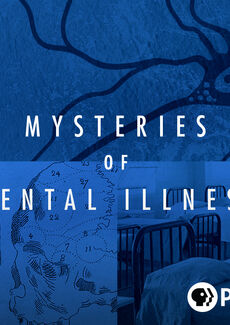 Try these videos to get started. Must be on campus or login with your COM account for off campus access.
Try these videos to get started. Must be on campus or login with your COM account for off campus access.
Want more on finding media? Try Articles & Media.
-
Asylum: A History of the Mental Institution in America (59:02)
This award-winning program brings to light the complex and controversial history of the mental institution in the U.S. through a detailed study of St. Elizabeths Hospital in Washington, D.C. It also debates whether deinstitutionalization has proved an overall failure, leaving more patients homeless than are mainstreamed into society, and if the time has come to reintroduce the asylum as a place of therapy and benign confinement. Rare archival footage, interviews with former patients, and insights from mental health historians David Rothman, of Columbia University, and Gerald Grob, of Rutgers University, make this a documentary not to be missed.
-
Madness: A History (Not Just American, 51:51)
In the past, there was no such thing as mental illness, only madness. Its treatment was often indistinguishable from torture or murder. This program follows the long, often grim road towards understanding and treating mental illness. Through testimonials, original manuscripts, photos, and extensive footage from medical archives, leading doctors and medical historians trace the history of asylums, the development of psychoanalysis, electroconvulsive therapy, and the rise of psychopharmacology. The program also details the once widespread use of phrenology, lobotomy, and lobotomy’s ancient precursor, trepanning.
-
On Being Sane in Insane Places (7:00)
This haunting film provides a brilliant summary of one of the most infamous experiments ever conducted in psychology, looking at its origins, methods, quite extraordinary findings and its lasting impact on psychiatry.
-
Out of Sight: The Rise and Fall of the Asylum—Madness (59:00)
Originally denoting a place of refuge, the word “asylum” became associated with brutal institutions for locking up people with mental illness. As attitudes about psychosis evolved, reformers began to provide more humane shelter—but these soon devolved into overcrowded, prison-like facilities that were not much better than what had come before. This program traces the history of mental institutions, noting how theories of care reflected the social mores of the time. The advent of psychiatric drugs means more patients now live outside of hospitals, but without structured treatment many become homeless—raising the question of whether reform has gone far enough. Contains surgical scenes of a graphic nature. A BBC Production. Part of the series Madness. (59 minutes)
-
The Rise and Fall of the Asylum (54:00)
Follow the origin and downfall of mental asylums in the U.S. Glimpse inside Cook County prison, the nation’s largest unintended mental health facility, meet the detainees in their care, and see the challenges they face both inside and out.
![]() Try these videos to get started. Must be on campus or login with your COM account for off campus access.
Try these videos to get started. Must be on campus or login with your COM account for off campus access.

